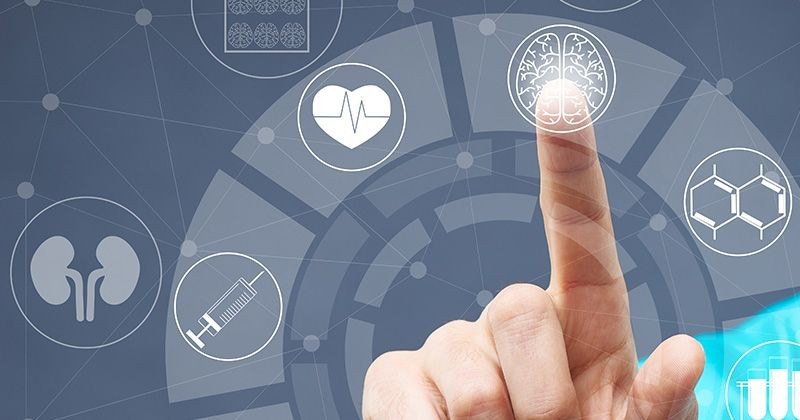Most consumers rarely equate health insurers with innovation. The industry as a whole is generally lagging when it comes to delivering innovative customer experiences.
Mike Matteo, CEO, UnitedHealthcare's National Accounts, says the company's mission is to turn innovative ideas into tools, processes, and resources designed to deliver a transparent and holistic customer experience at every touchpoint. The goal is to help consumers make better-informed decisions about their health. "You wouldn't expect to see innovation when you come to Hartford, [CT,] which is the insurance capital, but the company has that type of culture and is making innovation investments," Matteo says.
From hosting annual "Innovation Days" to keeping individual customer health scorecards developed from customer data, UnitedHealthcare is turning innovation into action. This is achieved largely from the organization's commitment to collecting data, which it routinely amasses from patients' medical claim information, laboratory data, individual biometric data, employer and consumer surveys, and from the provider's Customer Advisory Councils and Innovation Councils. "UnitedHealthcare has always been rich in data," Matteo says. "What's happened is that we are now able to take that data and provide information to consumers to help them make better healthcare decisions."
Matteo traces the company's initial use of tying data to innovation back to the late 1990s when company executives started to meet to discuss how to leverage the data that was swelling in its databases. The first initiative from those discussions resulted in an online benefit explanation tool. "It was about how to take the [benefits] information and put it out there in an electronic fashion," Matteo says.
In 2006 the company's senior leadership started discussions around how to deliver the data in a more advanced way to meet consumers' growing expectations and to prepare for mounting epidemic diseases like diabetes. The executives decided that tailored health programs and services would help to change consumers' personal behavior toward their health. The goal was to deliver solutions that would provide consumers with knowledge, support, simplicity, and innovation, as well as fulfill employer requirements of fostering a productive and satisfied workforce, while cutting costs. "We've created a simplified experience," Matteo says.
A healthy payoff
One aspect of that simplified, action-oriented experience is a rewards-based health management tool based on biometric profiles. By analyzing individuals' biometric and personal data, which includes a combination of claims data, lab data, self-reported data, and biometric data (e.g., height, weight, and cholesterol, blood sugar, and blood pressure levels), the insurer developed biometric profiles for individual consumers to ultimately help reduce the incidence of diseases like diabetes.
To make the biometric profiles actionable, the company launched Personal Rewards, a points-based personal health scorecard, a year ago. The employees of the companies that participate receive scorecards that are mailed to their houses. They can also choose to access them online. The Personal Rewards program is individually tailored to participants' personal health goals. For example, one participant may only need to hit the target BMI, cholesterol, blood pressure, and blood sugar levels to receive his points, while another participant who is asthmatic may need to show that she has been refilling her quarterly asthma medication. In addition to participants tracking their progress with their primary care physician, UnitedHealthcare offers workplace screenings. The results are recorded in the participants' Personal Rewards programs and the attending healthcare provider updates their personal scorecards.
If participants reach their health goals, they receive rewards customized by their employer and distributed based on a points system. Consumers can earn up to 150 points and then receive discounts on their monthly contributions or a cash-sum payout; in some cases employers set money aside in health savings accounts. Matteo says that the rewards can add up to an annual $900 savings per family ($450 for the employees and $450 for their spouses/partners) for achieving their full 150 points, or $450 ($225 each) for achieving 75 points.
So far, 72 percent of employees who have registered for the program have earned points, 47 percent have earned at least half of their rewards incentives, and 51 percent have completed worksite biometric screenings (more than 20,000 screenings were completed in UnitedHealthcare offices in 2010). Nearly 46 percent of plan participants have lost weight year-to-date, with an average weight loss of nearly 10 pounds per individual. "Having that big incentive at the end is part of it," Matteo says. "We're building a sustainable workforce so that people won't have events later on in life."
At UnitedHealthcare, data is not only leveraged to improve individuals' healthcare, but also to deliver tailored experiences. Its eSync platform, for instance, draws on all the customer information collected and builds customer portfolios. This data helps nurses, for example, tailor their conversations with patients to ask questions like, "Why aren't you taking your medication?" and "Have you thought about enrolling in a weight loss program?" "It helps the nurses create a personalized experience for individuals…and ultimately puts them on a path to better health," Matteo says.
Additionally, UnitedHealthcare uses the data from eSync to develop personalized e-newsletters that feature content specific to a patient's claim data. "In the past we mailed out static pieces to everyone," he says. "Now we…push out proactive emails."
Healthy employees = productivity
One element of UnitedHealthcare's strategy is to help improve the health and, consequently, the productivity of its customers' workforces. So the company has also launched a number of resources designed to enhance its customer experience and encourage individuals to develop healthy habits. "We took a step back and said, 'We need to find a way to make [healthcare] easy and understandable,'" Matteo says.
Health Care Lane is one resource that helps to achieve that goal. What started as an interactive website to simplify insurance terms, like explaining the difference between "co-pay" and "deductible," has recently transformed into a virtual town. Users can "walk" down Main Street and listen to video tutorials by entering a range of businesses, such as the wi-fi café for a lesson on UnitedHealthcare's personal member website, the city newspaper to learn about healthcare trends, or the fitness center to hear about the wellness programs.
Matteo says he and his team also re-create this virtual world in physical spaces at investor conferences. Rather than click through the website, attendees instead can physically walk through the "town" and can visit the replicas of places that appear on the site like the cell phone store to browse mobile healthcare apps or the pharmacy to look up information about pharmaceutical benefits. "We're helping to create healthcare literacy and to help consumers learn about their healthcare," Matteo says.
In its efforts to offer better healthcare support, UnitedHealthcare has also partnered with Cisco to launch Telehealth, a system that allows patients to visit an office, or "health pod," equipped with telepresence technology that includes a flat-screen TV connected to recording devices and physician instruments like a stethoscope.
Each health pod is staffed with a healthcare professional, who takes the patient's vitals like blood pressure and heartbeat. A doctor (possibly thousands of miles away) watches and listens through the technology and can capture the readings in a digital recording. UnitedHealthcare then incorporates the readings of a patient's pulse, for example, into his biometrics profile, helping physicians gain a more accurate picture of a patient's health year-over-year by comparing the recordings.
Matteo says Telehealth serves as a possible solution to the shortage of physicians in some areas of the country. He explains that in Colorado, for instance, some patients commute three hours roundtrip over the Rocky Mountains to visit their physician. Consequently, UnitedHealthcare built a health pod in one particular town in that area, cutting down residents' commute, and thus encouraging them to visit their doctor. "In America we will have a shortage of primary care physicians as access to care expands. This can be a great way to help accessibility," Matteo explains.
Train, measure, monitor
UnitedHealthcare serves more than 250,000 employers across the U.S. Given this diversity, it is important for the sales and account management teams to describe its services to customers with consistency and accuracy.
So in 2010, the company launched an enterprisewide training and certification program called One Value Story that encapsulates all the key programs, products, and services that the company offers its employees. The goal is to ensure consistency among its staff when they communicate with customers. To earn certification, employees needs to take both a written exam and deliver a presentation about what they learned.
Austin Pittman, chief growth officer for UnitedHealthcare, says that to date, 4,500 employees have been certified, including the company's senior leadership team. "As a result, we have received great feedback from employers about our ability to simply and succinctly describe the vast resources and programs we can offer to help them manage their employees' healthcare," Pittman says.
UnitedHealthcare measures One Value Story through customer feedback, and tracks its other programs and progress through research and analytics. Pittman says that the company recently engaged in a joint research project with the UCLA School of Public Health and the Centers for Disease Control and Prevention to measure how the provider's Diabetes Health Plan improves diabetics' compliance with their necessary treatments. The five-year study will include comparative development of new diabetes cases among patients with pre-diabetes, control of key risk factors among patients with existing diabetes, and total costs of care.
Pittman also says that the company has gathered first-year data about how its Personal Rewards program is encouraging UnitedHealthcare's own employees to adopt healthier habits and to become more diligent about monitoring their own health. "In the end, successful programs are defined by our ability to support individual behavior change and healthier lives while also helping reduce the cost of healthcare," he says.
Innovation at work
Many of those programs were spawned at UnitedHealthcare's annual Innovation Day. On March 11 this year, for example, employees representing all the company's business units descended upon Hartford to see the newest innovative ideas and solutions, like a number of healthcare apps, that the company will soon be rolling out. They also shared ideas with the company's decision-makers. Matteo brings employer customers to participate in this idea-exchange day, as well. "I truly believe that when you listen to your customers, you produce better relationships," Matteo says.
In addition to Innovation Day, UnitedHealthcare hosts several Customer Advisory Council meetings, which provide UnitedHealthcare with a deep level of feedback throughout the year. They also serve as focus groups to test new ideas. Each is attended by 30 to 40 employer customers. "Our Customer Advisory Councils were created to ensure that we never lose touch with the voice of the customer," Pittman says. "These councils give us an opportunity to listen and learn directly from employers, and to better understand what healthcare issues are most important to their organizations."
The recently launched NowClinic is an example of a program created from feedback given by the advisory councils. The program enables employees to consult with a physician online via a webcam. Delta Airlines is currently piloting the solution with its employees.
UnitedHealthcare's innovation transformation is working. In fact, in Forrester Research's 2011 Customer Experience Index, the company saw a 10-point increase in customer satisfaction over 2010. Pittman says that to date, tens of thousands of post-call surveys have been completed and member satisfaction totals 93.2 percent and climbing. "At the end of 2010 we recorded the highest customer satisfaction levels we have seen in years," Pittman says.
Matteo adds that the company's Net Promoter Scores have also jumped significantly over the past three years. "All the innovation comes from our customers driving us to it," he offers as a reason for the success. "It's a supportive culture that dedicates time and capital to [innovation]. For such a large company we have a great innovative spirit."
















